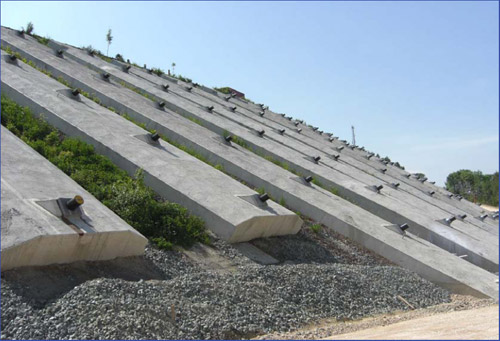Williams Anchors: The Preferred Option for Essential Anchoring in Challenging Atmospheres
Williams Anchors: The Preferred Option for Essential Anchoring in Challenging Atmospheres
Blog Article
Innovative Rock Anchors for Improved Building And Construction Support
Cutting-edge rock anchors have progressively end up being a focal factor in construction engineering, especially as projects demand greater stability and effectiveness. With advancements in products and modern technology, contemporary anchoring services such as grouted and post-tensioned styles use significant renovations in load-bearing ability and adaptability to diverse geological problems. The combination of sophisticated modeling strategies even more improves performance optimization, yet the full possibility of these technologies remains to be explored. As we consider the implications of wise sensing units and sustainable practices, one must ask: just how will these advancements redefine the future of construction support?
Evolution of Rock Anchors
The evolution of rock anchors has considerably transformed building practices over the past century. As design techniques progressed, so did the understanding of geological conditions and the demand for trustworthy anchoring systems.
In tandem with improvements in products scientific research, the development of grouting methods enhanced the bond in between the anchor and bordering rock, resulting in increased stability and resilience. The integration of innovation right into layout and screening processes has resulted in much more specific and effective installment methods, further maximizing efficiency. Computer system modeling and simulations now permit designers to anticipate anchor behavior under various problems, enhancing safety and security and integrity.
In addition, the expanding focus on sustainability within building and construction methods has led to developments in environmentally friendly products and techniques for rock anchoring. Overall, the trip of rock supports reflects the building and construction sector's adjustment to both technical innovations and the raising complexity of modern-day engineering difficulties.

Kinds Of Modern Rock Anchors
Modern rock supports can be found in a range of types, each made to meet details design needs and geological conditions. The most usual kinds consist of grouted anchors, which include placing a steel ligament right into a drilled hole and loading the space with cement to create a solid bond with the bordering rock - Williams Anchors. These anchors are usually made use of in applications requiring high tons capacities
Another widely made use of type is the mechanical support, which depends on mechanical gadgets to protect the support in location without the requirement for grouting. These anchors are favored in scenarios where instant load-bearing capability is crucial.
Additionally, there are post-tensioned anchors, which are installed tensioned to give stability to structures such as bridges and retaining wall surfaces. These supports assist to combat tensile forces acting upon the structure.
Advantages of Cutting-edge Layouts
Innovation in rock anchor style brings various advantages that boost building and construction efficiency and architectural honesty. Modern styles use innovative products and design techniques to considerably boost load-bearing abilities. These cutting-edge anchors are typically created from high-strength steel or composite products, which not just lower weight however also boost resistance to corrosion, making sure longevity and integrity in different ecological problems.
Moreover, making use of computer-aided layout (CAD) and limited element evaluation (FEA) allows for exact modeling and screening of anchor performance under real-world conditions. This results in anchors that can be customized to specific task demands, maximizing their effectiveness and decreasing the demand for over-engineering, which can be both set you back and resource-intensive.

Situation Researches in Construction
Real-world applications of innovative rock support layouts show their transformative influence on building and construction projects. One noteworthy situation research study involves the building and construction of a skyscraper in a seismically active area. Engineers utilized advanced rock anchoring techniques that used high-strength products, guaranteeing the structure's security against potential quakes. The supports were tactically placed to boost tons circulation and decrease settlement, ultimately bring about a much more resistant structure.
One more websites significant example can be discovered in the development of a transportation passage. Ingenious rock supports were utilized to safeguard the tunnel walls, permitting for much deeper excavation without jeopardizing security. The application of grouted rock supports provided increased tensile toughness, making it possible for employees to progress the job immediately.
In a third instance, a significant dam project integrated rock supports to stabilize the embankment. The use of corrosion-resistant materials in the supports guaranteed long-lasting toughness, minimizing upkeep prices and improving safety and security standards.
These study show the performance of cutting-edge rock support layouts in attending to intricate engineering obstacles, highlighting their crucial function in modern-day building methods. The successful end results highlight the need for ongoing financial investment in sophisticated anchoring technologies to meet developing building demands.
Future Trends in Rock Anchoring
As building demands evolve, the future of rock anchoring is positioned for substantial innovations that will certainly enhance safety and security and efficiency in various applications - Williams Anchors. Arising technologies, such as clever sensors and real-time surveillance systems, are anticipated to play a critical duty in the growth of more dependable anchoring solutions. These innovations will certainly enable for constant assessment of support performance, allowing timely interventions and lessening risks connected with structural integrity
In addition, the assimilation of sustainable materials and methods is coming to be increasingly crucial in the building sector. Future rock supports might include eco-friendly materials that lower ecological influence while preserving efficiency standards. Moreover, innovations in materials science could cause the growth of high-strength, light-weight supports that simplify setup procedures and decrease labor prices.

Final Thought
In conclusion, cutting-edge rock anchors represent a significant development in building and construction support, resolving the difficulties posed by diverse geological problems. The growth of modern-day styles, including grouted and post-tensioned supports, boosts load-bearing capabilities while see this website promoting stability. Assimilation of sophisticated innovations, such as computer-aided style and wise sensors, better optimizes performance and sustainability. Continued research study and execution of these advancements will unquestionably form the future of building practices, ensuring efficiency and environmental obligation.
Report this page